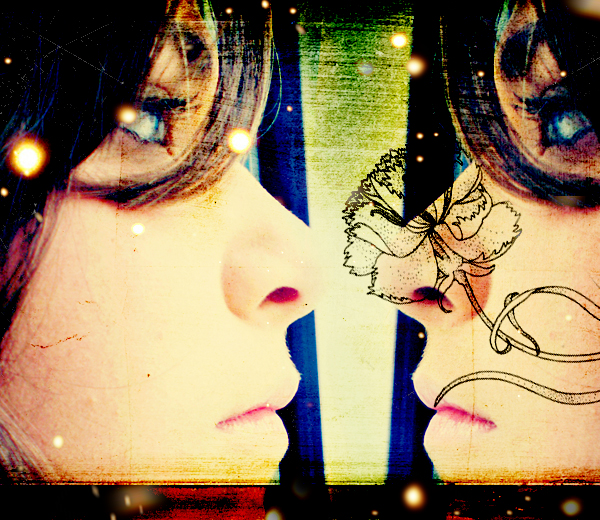This week I had my second class at the eating disorder treatment center.
There was already a palpable tension as I walked in.
It was like the feeling of seeing someone holding a knife over another person’s chest the moment before a major surgery—you just don’t know what might happen.
A soft, sobbing shape of a body quietly whimpered. Women filtered in, to do yoga, with their heads hung low. The crook in their torsos and abdomens hinted at a deep, dark secret concealed below the layers of uncomfortable skin and shame.
Arranging the women so everyone had their space, pillows and blocks—I placed a kind hand on the shoulder of the crying woman. A gesture to ask, “Are you alright?” And also to let her know, “You’re going to be okay”.
As I settled in to teach, I had an urge to spill my guts to these these women. I felt they were suffering today especially. I wasn’t sure exactly what occurred and no one said anything, but they could barely crack a smile. I felt a familiar suffering as I settled in to teach.
Inside I was overflowing. I wanted to reassure them and say, “You’re going to be okay! Yoga saved me. It saved me from an eating disorder. It will save you, too!”
I found the strength somehow, to hold back the urge and the tears fighting their way into my eyes—the familiar knot in my throat telling me to scream out but then blocking the air, just as I try to just f*cking let go.
I wanted to solve and fix everything for them…
But today was not the day. Instead, I pulled another tool from my arsenal—a study on trauma I recently read about.
Psychiatrist and traumatic stress expert Bessel Van der Kolk was interviewed about childhood trauma and how it leads to brains wired for fear. When asked, “Are there effective solutions to childhood trauma?” I was ecstatic when Van der Kolk mentioned a study on yoga for PTSD.
He explained that it’s about becoming safe to feel what you feel. When we’re traumatized, we’re afraid of what we’re feeling, because our feeling is always terror, fear or helplessness. These body-based techniques help us to feel what’s happening in our body and to breathe into it. To not run away from it. So we learn to befriend our experience.
“Safe to feel what you feel.”
This is what I experience and witness in my own healing through developing a yoga practice. Yoga saved me from the self-inflicted trauma of an eating disorder. Yoga made it safe for me to feel and not distract—not brush under the rug or ignore. Instead I learned to feel.
I noticed what had happened to my body. I could physically feel the damage imposed each time I made myself vomit. I could feel the veil of self-loathing I coated myself in day after day, like a disgusting wet blanket. I slept and woke with it. Every inch of my body needed improvement. Nothing was beautiful, nothing was ever good enough.
Even with a strong yoga practice in place, healing was no easy task. I wrestled with countless gremlins. Deep, damaging, dangerous and persistent, they convinced me I deserve the pain as penance for some karmic wrongdoing.
Consistency prevailed. Consistency in my yoga practice and consistency in my emotional practice. I allowed laughter when falling out of poses and tears in the middle of class when I felt my heart swell up like a bruise. One step at a time, each day, reminding myself I wasn’t going to solve everything at once. This was where I would really begin to understand what it meant to go through a process.
Teaching this class challenges me on an entirely new level. Many of the women I teach are not even past the first exercise level, meaning it is highly recommended they remain lying down or sometimes seated. It has thrown me for a loop and forced me to question what yoga is and how it can serve these women.
During our time together we make our way through some simple movements that are derived from what I am now teaching—the Bowspring Practice. Bowspring encourages truthfulness with ourselves and others. It inhibits the “I give up!” posture—shoulder shrug and head tilt.
The last 15 minutes of class we sat on our blocks. My eyes were closed, but I peeked and saw it again so clearly—the slumping, the diminishing, the lack of confidence and the glazed, empty eyes. Slowly, I talked them through how to sit from the pelvis up. Together, we sculpted our postures into the radiating, exuberant beings that we are. I noticed corners of mouths slightly turned up (smiles!) and rib-cages becoming fuller as the women started to beam in their seats.
A small step to practice sitting with fullness, but immediately the energy in the room shifted. Carving our Bowspring posture held us in such a way that made room for sensitivity—for the vast spectrum of emotions to flow freely. It was a communal, deep sigh of relief, with little effort. It was a reprieve from the concealing and diminishing, and an exploration into what it means to stay big. An exploration—an invitation to feel like they were worth so much more than they allowed credit for.
I’m not anticipating saving these women’s lives from their eating disorders by teaching them yoga. But do I hope they will get a glimmer of light from this hour of respite. I hope they will receive a reminder to be kinder.
It’s a learning process for me as well.
I need to go through this process with them, one day at a time. Some days are fantastic—everyone grinning ear to ear and able to participate fully in all the poses. Some days just feel like wrangling a f*cking mess, but at least we are wrangling it together.
Relephant:
Yoga is Where I Let the Healing Tears Flow.
~
Author: Maggie Converse
Apprentice Editor: Carlene Kurdziel; Editor: Yoli Ramazzina
Photo: Flickr/.estelle f.







Read 3 comments and reply